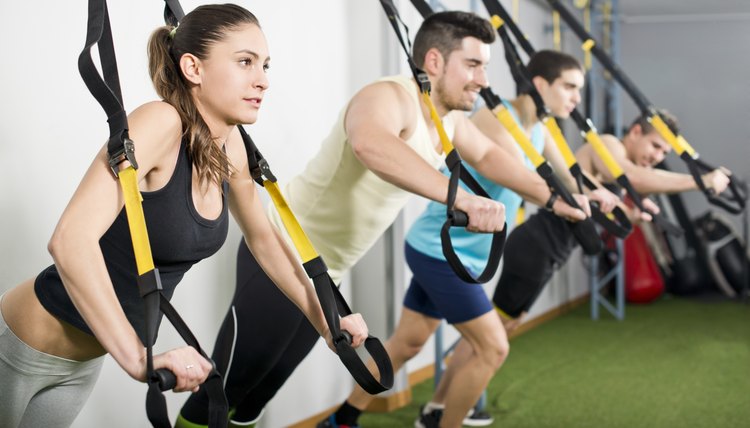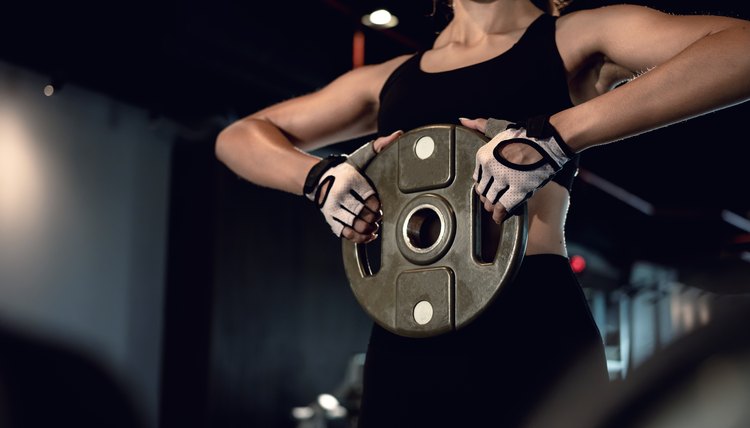Can Weightlifting Increase Breast Density?

Weightlifting increases muscle density. Underlying your breasts are your pectoral major and minor muscles. Breast tissue, in front of your pecs, contains no muscle at all, but rather is composed of connective tissue and mammary glands -- called fibroglandular tissue -- and body fat. Exercising can increase the density of the muscles behind your breasts, but your actual breast tissue is not affected by exercise.
Factors Influencing Breast Density
Hormones, pregnancy and weight affect the density of your breasts and overall breast size. Pregnancy and lactation hormones increase breast density, as does weight gain. Hormonal changes accompanying menopause generally lead to reduction in breast density. Those who undergo breast augmentation can have a higher breast density as well.
Breast Density Differences Among Women
Breast density is described as the comparison of fibroglandular tissue to fatty tissue. The Monroe County Medical Society assigns descriptors to breasts based upon percentage of fibroglandular tissue: fatty -- less than 25 percent fibroglandular tissue; scattered tissue -- 25 percent to 50 percent; heterogeneously dense -- 50 percent to 75 percent; and extremely dense breasts -- more than 75 percent.
Exercises for Pectoral Muscles

MaxRiesgo/iStock/Getty Images
Although you cannot increase breast density through weightlifting or cardio, you can give your breasts the appearance of increased prevalence and density by bulking up your pecs and upper body. According to the American College of Sports Medicine, the barbell bench press increases chest muscle size more quickly than any other weightlifting exercise, but you need a spotter when performing barbell bench presses. When you exercise solo, the dumbbell bench press is safer and provides a good workout for your chest muscles, increasing pectoral muscle size when performed on a regular basis. Be sure to warm-up to avoid injury during resistance training.
Can weightlifting prevent breast cancer?

MaxRiesgo/iStock/Getty Images
Studies have shown that physical activity, aerobic exercise and strength training can help reduce the risk of breast cancer by encouraging weight loss. This is because body fat and obesity is a risk factor for breast cancer among other cancers, which weight training helps to decrease. It is recommended that women aged 40 get a mammogram and do an annual follow-up. Many public health care providers recommend getting two mammograms if you have high estrogen, dense breast tissue or a high BMI. A mammogram is a radiology process that involves getting an x-ray on the breast
Writer Bio
For Judy Kilpatrick, gardening is the best mental health therapy of all. Combining her interests in both of these fields, Kilpatrick is a professional flower grower and a practicing, licensed mental health therapist. A graduate of East Carolina University, Kilpatrick writes for national and regional publications.
